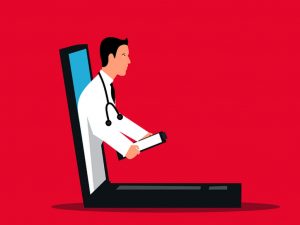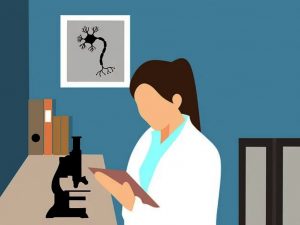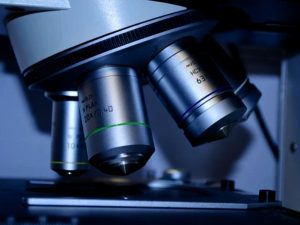Advantages and Disadvantages of Medical Technology: Because technology is so crucial in every field around the world. In every industry, new technology devices are developed to assist individuals and make their work easier. In addition, technology plays a critical role in the medical and healthcare fields. There have been numerous technological devices and equipment developed for human health care. An insulin pump, digital thermometer, blood glucose meter, pulse oximeters, wireless brain sensors, smart inhalers, and other medical equipment are among the devices. These technologies are designed to help patients receive better health care.
All technological gadgets or equipment utilized to save human life is referred to as medical technology. There are about 500,000 technical devices and equipment in use in hospitals and other healthcare departments in the medical business. Doctors could only forecast disease before the development of medical technology. That is the ailment or issue that the patients are dealing with. Diagnosing the particular disorders or diseases that patients are suffering from is extremely difficult for doctors.
However, with the advancements and discoveries of medical technology, it has become much easier for them to identify the problem or ailment and provide appropriate therapy to the patients. As a result, technology plays a critical role in medicine and healthcare. In the medical field, technology has many advantages, but it also has disadvantages.
Recommended: How to make learning fun for high school

Advantages (Merits) of Medical Technology
1. Communication Systems in Healthcare Hospitals: For patients to communicate through their nurses or doctors, there are indeed a variety of technologies accessible. These technological systems are placed in inpatient rooms and hospital wards and are meant for patients. In times of emergency, patients can activate the device’s button. It alerts medical personnel of the patient’s expected arrival time. This is among the most important advantages of technology for patients and healthcare professionals. The doctor could quickly reach the patients and save their lives with this type of device.

2. Easy access to patient medical records: The gathering of patient data is one of the most crucial aspects of healthcare technology. Doctors need medical information to assess a patient’s health and ailments to determine a potential cure. Because everything is done by hand with paper and ink, patient records generate a lot of paperwork.
Obtaining records was a challenge. The rise of digitization, on the other hand, has enabled patients’ medical data to be entered into a cloud-based, computerized system. Practitioners, patients, and healthcare billers may now access information with a single click, from anywhere and at any time.

Recommended: Advantages and Disadvantages of Technology in Agriculture
3. Reduction in medical errors: Medical errors are a growing source of public anxiety since they occur frequently and are an unavoidable element of human functioning. Medical mistakes in hospitals and healthcare facilities in the United States are the third greatest cause of death, accounting for roughly 98,000 deaths per year. Thankfully, technological advancements have aided in the development of systems that have been shown to reduce medical mistakes to save more lives.
The Clinical Decision Support (CDS) system provides media cal and patient-specific information to healthcare professionals. This data is rationally filtered and delivered to healthcare professionals at the proper moments, to improve the healthcare provider’s decision-making. It can provide evidence-based standards and advice, as well as processes and protocols, as well as regulations and suggestions for care.
4. Greater patient care: Technology can help improve patient participation by giving data that can be used to construct hyper-targeted, individualized health and wellness plans.
Wearable technologies such as fitness bands and other wirelessly connected devices such as Fitbits can monitor one’s blood pressure and electrocardiogram (ECG), providing individualized information to patients and specialists. Calorie counts, exercise checks, appointments, blood pressure fluctuations, and other data can be displayed on these gadgets.
Also see: Highest Paying Programming Jobs 2022
5. Improved patient education: In healthcare, patient education is becoming increasingly important, and specialists are adopting technologies that could better inform and educate patients. Software and programs have been developed that would provide patients with personalized health knowledge and information depending on individual terms and conditions.
The Patient Electronic Portal, for instance, is a safe online tool that gives patients access to confidential health information as well as two-way electronic communication with their healthcare providers by smartphone or computer. According to research, this application improved patients’ compliance with preventative medical procedures, medical adherence, self-awareness, as well as health management.
6. 3D Printing: 3D printing technology could be used to replicate bones and numerous interior organs. The artificial organs and bones can then be put into the body of a patient to replace ill or bothersome portions.
Surgeons are also using 3D printing to acquire a better knowledge of what is happening within their patients’ bodies. By exploiting a 3D model, a surgeon can take a closer look at the problem and consider a variety of solutions or possible treatments before performing a specific operation on the subject.
Recommended: Advantages and Disadvantages of being a lawyer
7. Genome Sequencing: Some believe that personal genomics will be the future of healthcare. The process of sequencing and studying a person’s genome, as well as presenting that information to that person, is referred to as personal genomics. Human genome sequencing has been one of medical science’s most significant achievements during the past 40 years.
Recommended: Countries with the best education system in the world
Disadvantages (Demerits) of Medical Technology
1. Increased Cost of the Treatment for the Patients: One of the downsides of medical technology is the higher cost of therapy. Almost all technological treatments and operations, such as robotic surgery and other types of technological machinery surgeries, are quite expensive. The majority of the patients are from rural areas and are poor. Poor patients can’t afford expensive operations.

Technology has improved health care, but it has also increased its expense. Which the sufferers are unable to pay.
2. Show the Wrong Result of the Patients Condition: One of the disadvantages of health care technology is that the equipment or technical instruments can occasionally produce incorrect results. It didn’t always show the doctor the most up-to-date results for the patients.
Engineers & programmers create technical machines. Mistakes and problems do appear occasionally. It didn’t work correctly after that. It puts the patient’s life in peril if it reveals the incorrect results and the doctor offers the wrong diagnosis. For patients, this is one of the most harmful disadvantages of technological use in medicine.

Recommended: Differences Between Abbreviation and Acronym (With Examples)
3. Lack of Information about the Patients: Healthcare technology has another disadvantage: a lack of knowledge. Hospital laws include things include security and privacy. to safeguard the privacy of the patient This law, however, may be broken due to technological advances.
Patients’ information stored in hospital computer databases could constitute a security breach. Hackers can get access to a system, stealing and changing confidential information concerning a patient’s care. If the patient’s entire treatment history is altered. As a result, the patient’s subsequent treatments may be jeopardized.
4. Time-Consuming in Recovery: Engineers and programmers create the technological tools and gadgets utilized in hospitals for patient treatment and checks. If any flaws or problems occur. As a result, no one can repair it because no one knows how to retrieve and repair that machin.
It necessitated the presence of a certain individual who is familiar with the subject. It was built by engineers. He’ll be able to correct the problem. As a result, repairing and recovering devices take a lot of time.
Recommended: Countries with the Most Beautiful Women in the world
5. Patient’s Online Treatment Through Technology: Nowadays, doctors provide treatments via the internet. Patients contact them via the internet and recommend a diagnosis. Patients are not required to visit a doctor’s clinic.
They can simply receive therapy from the comfort of their own homes. The doctor diagnoses the patient without performing any tests or analyzing their medical history. Which could be incorrect and perhaps harmful to the patient’s health.
Also see: How To Come Up With the Perfect Book Title

6. Automatic Machine Treatment: There is a machine that is implanted into the patient’s body. It examines the patient’s physique and administers medications by their medical needs.
These devices are created by programming faults and bugs in their code. Then it is extremely hazardous to patients since it has the potential to implant the incorrect diagnosis into the patient’s body. This results in the patient’s critical state and death.
7. Damaging Cells and Organs of the Body of the Patients: Nowadays, lasering operations are very popular. Which has a boatload of harmful health implications for humans? Lasers now can harm cells in the body. It can harm our other internal organs, which is very harmful.
They were used to dissolve brain cancer in the 1980s and 1990s. Cutting, suctioning, or perforating tumors with traditional methods is regarded to be less exact. Finally, statistics show that lasers are both expensive and slow. Long-term outcomes for patients never appear to get better, and in some cases, they’ve never been worse.
Recommended: Advantages and Disadvantages of Social Media to Students
Conclusion
In the current era, medical technology is a vast field that is rapidly evolving. There is little doubt that the benefits and drawbacks of medical technology in healthcare are inextricably linked, yet multiple pieces of data suggest that benefits outnumber drawbacks. The disadvantages are so slight that they can be eliminated with additional advancements, ensuring that medical technology is fully safe.

Edeh Samuel Chukwuemeka, ACMC, is a lawyer and a certified mediator/conciliator in Nigeria. He is also a developer with knowledge in various programming languages. Samuel is determined to leverage his skills in technology, SEO, and legal practice to revolutionize the legal profession worldwide by creating web and mobile applications that simplify legal research. Sam is also passionate about educating and providing valuable information to people.